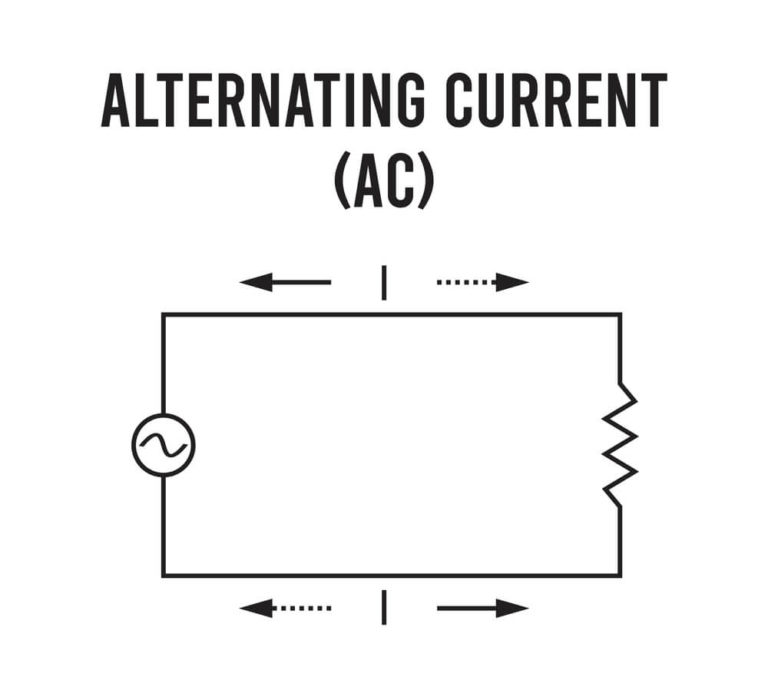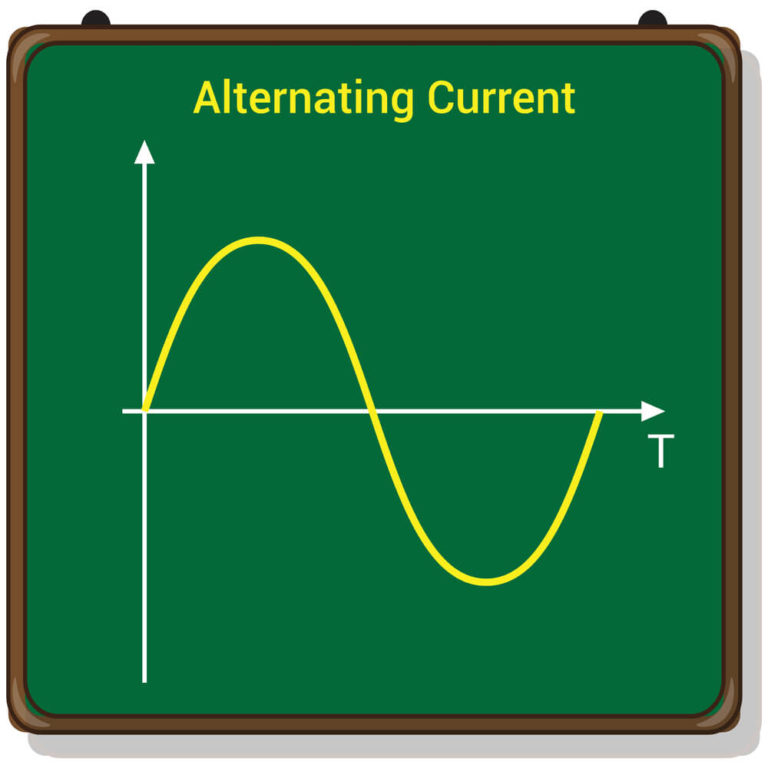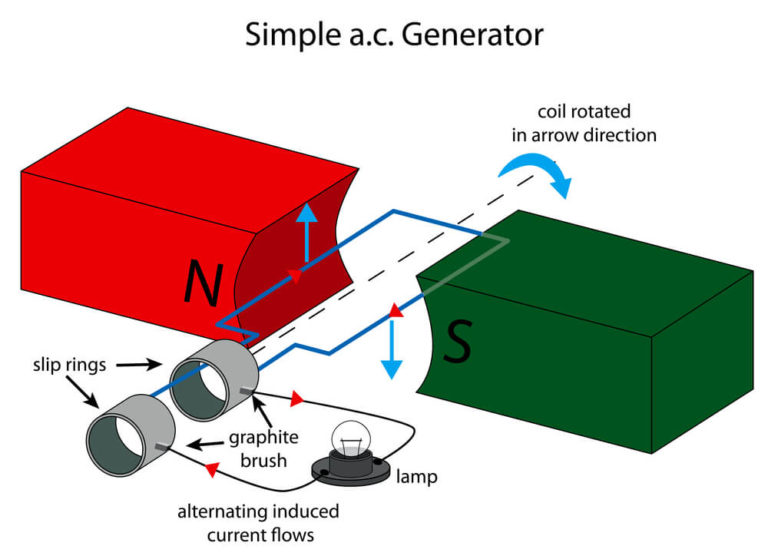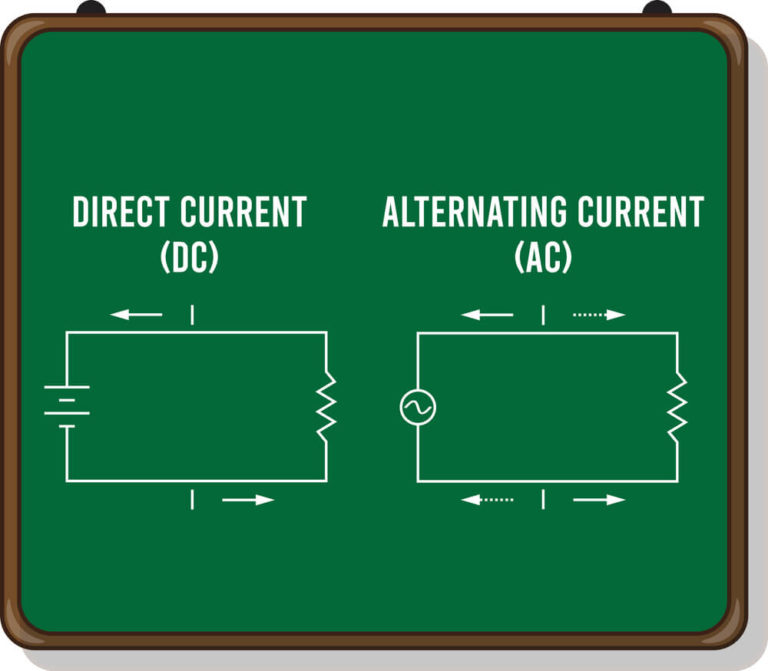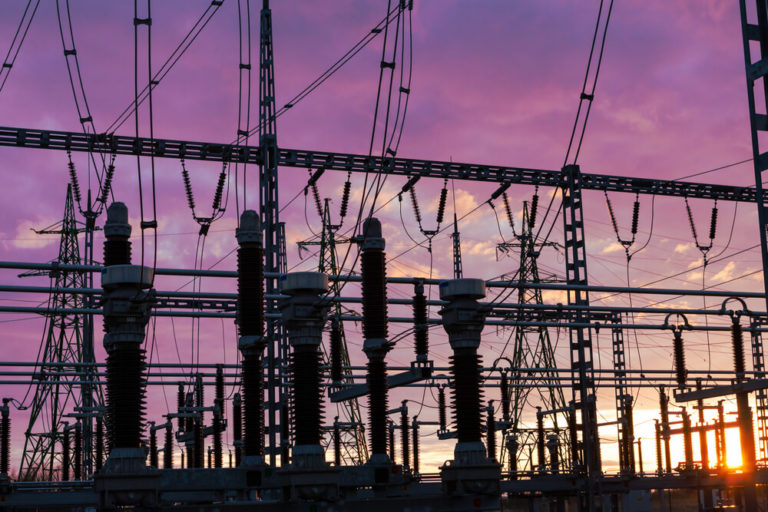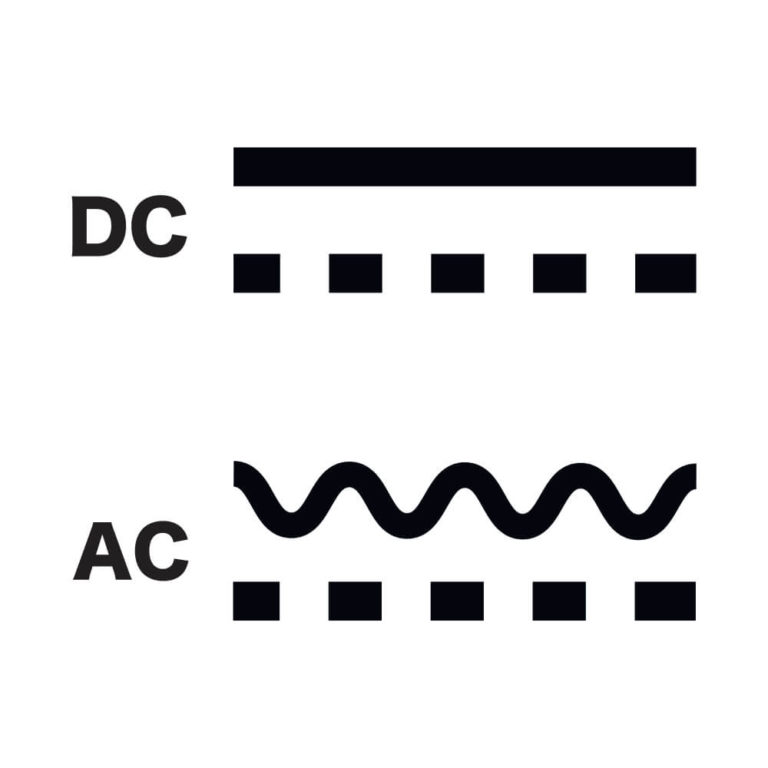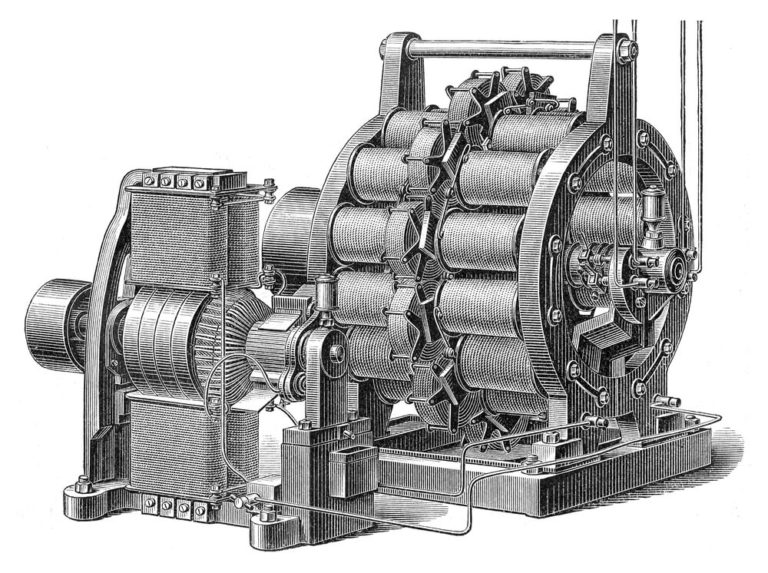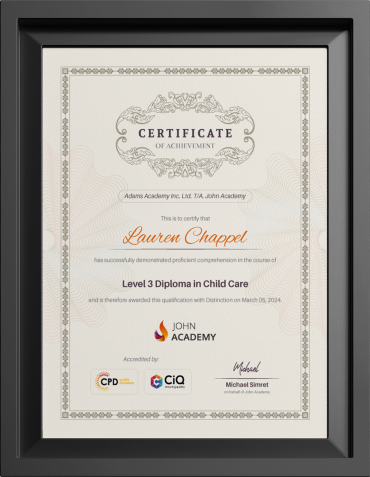
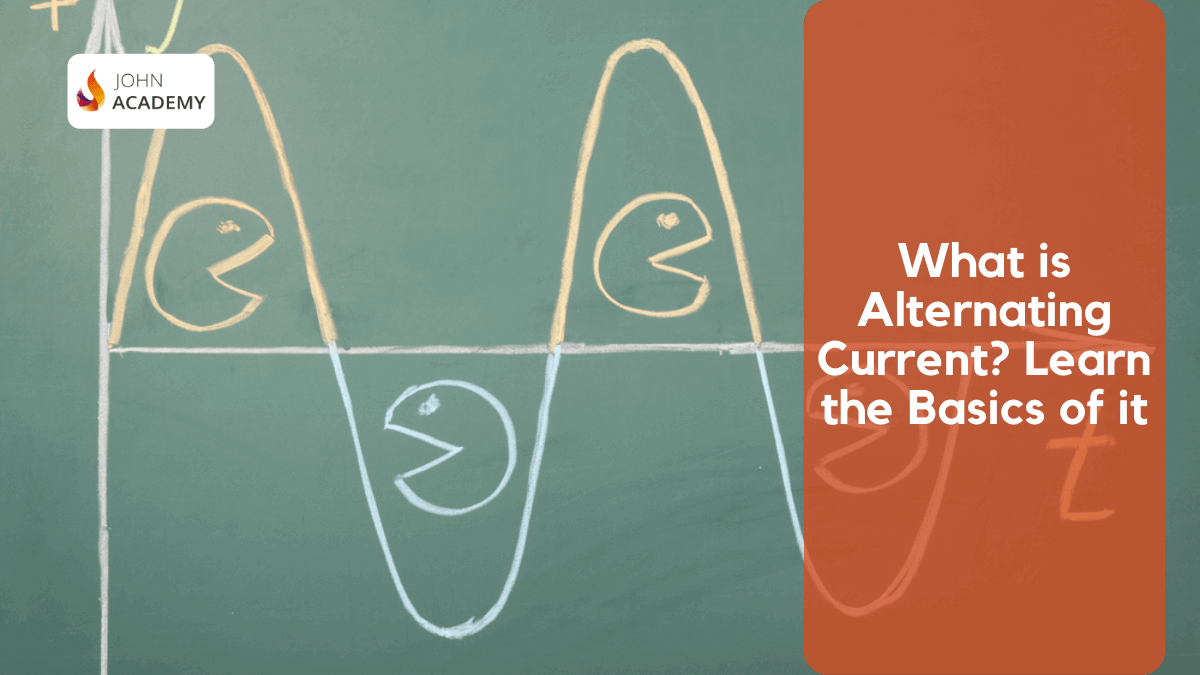
Electricity runs our daily life. It is pivotal for industrial and infrastructure development. In modern-day electricity supply, power transmission is unimaginable without alternating current or voltage. Moreover, the access to electricity that we get every day by plugging in a circuit to our electric socket is an example of an alternating current. You can also see the reference of alternating current in the body of different electrical gadgets.
If you take an interest in physics, electricity and want to work with wires, nuts, and bolts, having the knowledge of Alternating current is a must. This article will give you details on all the basics of Alternating Current.
Table of Contents
What is Alternating Current?
An Alternating Current is a form of electrical current. Its common referring abbreviation is AC. In this type of electric current, electron flow reverses direction and magnitude in a regular interval of time. It is the electric power that is flowing in the power line and being delivered to all kinds of business and residential buildings. Therefore, the power supply at our home is an example of alternating current. Additionally, the electricity that we get to charge our phone, run the fridge or watch television comes from alternating current.
There are many sources of electricity that helps to produce AC. The most popular AC producer is electromechanical generators. It generates AC voltage alternating in polarity, changing between positive and negative over time. Moreover, an alternator can also be used to generate alternating current We usually generate alternating current using wind turbines, hydro, diesel, or steam. Solar energy sources can also generate alternating currents. But some of these sources generate a direct current which is inverted to alternating current before it goes into the electric grid.
Alternating current is a basic part of Electricity. In order to know more about alternating current and Electricity, join our Online Electrician Course today and gain all the beneficial knowledge from it.
The Waveform of Alternating Current
The waveform of alternating current in the majority of electric power circuits is a sine wave. But you will also be able to find square and triangular waveforms of alternating current.
But the most common waveform is a sine wave, where the voltage of AC increases constantly in pace and comes down. First, the voltage rises from zero to a maximum positive peak voltage, then it reverses and falls back to zero. It then continues its journey in the negative direction and goes down until it reaches the negative peak voltage. Again, the voltage changes direction and rises to zero, and completes one entire cycle.
Firstly, the rate at which the electric charges or electron changes direction is measured by the amount of complete cycle per second. This is known as the frequency and is measured in Hertz(Hz). Secondly, the whole process repeats at a frequency of 50Hz to 60Hz (cycle per second). Therefore, these are the two frequencies that are commonly used in household and industrial applications.
Transmission of Alternating Current
Here is how alternating current comes to us in our day-to-day life. These are some basic information that will keep you aware of how alternating current is running the world.
Firstly, Europe and most of the world use a standard of 220 volts roughly and 50Hz of alternating current in their power grid. Secondly, the USA and some other regions use a standard of 120 volts and 60Hz of alternating current. Thirdly, countries like Japan use both of the standards in their grids.
110 – 120 V, 60 Hz | 220 – 250 v, 50 Hz | Both |
Canada, Columbia, Cuba, Japan, Mexico, Taiwan, USA, Venezuela, | Argentina, Australia, Austria, Bahrain, Bangladesh, China, Denmark, Egypt, Finland, France, Germany, India, Iran, Iraq, Italy, Kenya, Kuwait, Malaysia, Nepal, Netherlands, New Zealand, Nigeria, North Norway, Pakistan, Philippines, Russia, South Korea, Spain, Sri Lanka, Sweden, Thailand, UAE, UK | Bolivia, Brazil, Libya, Saudi Arabia |
One other example of alternating current is audio and radio signals that pass through electric wires. Moreover, for industrial use, the standard use of alternating current voltage is 415V.
Aircraft, spaceship, marine, military, and applications use 400Hz of alternating current. These are the sensitive application and where light equipment and higher motor speed is necessary.
Alternating current is easy to generate and suitable for power distribution. This is because AC can easily be transformed from a higher voltage level to a lower voltage level. In other words, the alternating voltage can easily be stepped up or down to a required voltage level.
In order to reduce energy loss during transmission, electrical power is transferred at higher voltage and lower current. Moreover, this helps to transfer electric power over a certain long-distance through electric grids. The power is later stepped down just before being distributed for normal day-to-day electricity use.
Wire for Alternating Current
The majority of the Power Grids are for AC. Therefore, all generators of AC that are in connection with the power grid must be in sync with each other. The equipment that uses AC current usually have three kinds of wire:
- A hot wire that transmits the current.
- A Neutral wire that creates a return path for the current in the hot wire. It also has a connection to the earth.
- The third wire is the ground wire which also has a connection to the earth. The wire has a connection to the metallic part of the equipment. It ensures that electrical safety and eliminates electric shock hazards.
However, most of the electronic gadgets that we use receive the alternating current and transform it into direct current. This is because most devices like smartphones and laptops run on a battery which uses direct current. Therefore, alternating current can damage the battery and also the gadget.
How to Produce Alternating Current?
You can produce alternating current with the help of a device, Alternator. The alternator is a special kind of electronic generator that produces alternating currents. Moreover, the alternator consists of a magnet and a loop of wire. In the alternator, the wire loop is spun inside a magnetic field. As the loop of wires spun, it induces a current through it.
The rotation of the wire can happen through any kind of means, such as a wind turbine, steam turbine, flowing water, etc. The wire spins and enters different magnetic polarities at a regular interval. As a result, the voltage and the current alternate on the wire.
To be more precise, as the wire spins in the magnetic field, the strength of the magnetic field changes through the wire, which creates a force. As a result, the electric charges start flowing around the wire.
Moreover, the force creates an electric current in one direction of the wire. But the wire loop rotates 180 degrees. As a result, the force reverses in the wire and create an electric current in the opposite direction around the wire. Therefore, every time the loop rotates 180 degrees, the force changes direction in the opposite way. As a result, the current flow also changes. These 180-degree change of direction of the force at a regular interval generates alternating current.
The alternator or the electric generator also have slip rings that ensure that the end of the wire is always connected with the same side of the electric circuit. As a result, the direction of current changes on every half rotation of the wire.
Alternating Current Vs Direct Current
In our everyday electricity use, we generally use two kinds of current mainly. We are already discussing alternating current, but the other one is direct current (DC). In order to define direct current, it is the flow of electric charge in one direction. Batteries, cells, rectifiers and generators with commutators produce direct current.
Before we jump into comparison, we need to understand how both kinds of electric current causes losses. This will help us understand what kind of electric current must be used in what type of situation.
The alternating current had specific advantages over direct current for decades. Firstly, the transmission of AC was more efficient over large distances without too much loss of energy to resistance. Changing the current voltage was difficult using the first DC electric power grid during the late 19th century. As a result of too much power loss, these grids was maintaining low voltage and high current, and only short distance transmission was possible.
Therefore, the AC system soon replaced DC power transmission. AC power can transmit at a high voltage and low current, and we can easily change the voltage with help of a transformer. But DC system can quickly change voltage as well. But modern AC systems can transmit powers from generators with hundreds and thousands of voltage. The voltage is then lowered from 120 volts to 220 volts for general domestic and commercial use.
However, many electric gadgets prefer direct current to alternating current for safety reasons, smooth flow of current and even voltage. But AC current in power outlets can be transformed into DC as it enters the electronic gadgets.
Power Loss for Both Form of Electric Current
In order to transfer electricity over very long distances, DC current is more suitable than AC current. The charging current is very high for AC which causes I2R loss.
In a theoretical circuit, all the power that goes into an input terminal reaches the critical load without any energy loss. It doesn’t dissipate in the wiring component that comes along the path. But in a real circuit, is always a minimum amount of resistance where some amount of power is lost. This occurs in both AC and DC supplies, which cause electrical losses, and the dissipation occurs as heat. You can calculate the loss of electricity in the following way.
According to Ohm’s Law: V = IR where V = voltage (Volts) across a component, R is the resistance (in Ohms) of a component, and I is the current in Amps through the component.
Power Law: W = VI where V and I are similar as above, and W = power dissipated in Watts.
After we combine these two laws, we can find the loss W=(IR)I or I2R.
It is known as Copper loss. The reason behind explaining all this formula is that this copper loss can be more in AC circuits like transformers. However, more losses also happen due to induced current that flows through the resistance of the component’s iron core. It is called core losses.
Copper losses in transformers and motors can be decreased by increasing the cross-sectional area of the conductor, improving the winding technique, and adopting materials with higher electrical conductivities.
The proximity effect and skin effect cause the current to be unevenly dispersed across the conductor at high frequencies, increasing the conductor’s effective resistance. Litz wire can distribute current uniformly across its cross-section.
Differences Between Alternating Current and Direct Current
Both alternating current and direct current describes the flow of current in a circuit. To recall the basics of both currents, in the direct current electric charge flows in one direction. On the other hand, alternating current changes direction periodically. Here are the major differences between AC and DC.
AC vs DC
Alternating Current (AC) | Direct Current (DC) | |
Frequency | The frequency of AC is 50Hz or 60Hz that varies with country. | The frequency of DC is zero. |
Generator and Motor | The generator and motor do not require a commutator. | It needs commutator/split rings, which generates sparking. Carbon brushes must be periodically replaced. |
Reason for the different electron flow | Rotating magnet along the wire. | Steady magnetism along the wire. |
Current | The magnitude of current varies with time | Current has constant magnitude. |
Stepping Up and Down | Easily stepped up and down with transformers. Stepped-down voltage can be rectified to DC with diodes. | Cannot step up and down with transformers. Switched-mode converters are needed, which use transistors. |
Safety | Less safe, as more likely to produce fibrillation in the heart. | Safer, as contact with line is less likely to result in fibrillation of the heart |
Consumer Electronics | Line AC must be stepped down and then converted to DC. | Based on transistors, FET’s and ICs use on low voltage DC. |
Transmission | AC is safe to transfer over longer city distances and can give more power. | The voltage of DC cannot travel very far because it begins to lose energy |
Interruption with Circuit Breakers | Easy to interrupt as arc current passes through zero 100-120 each second. | Interruption is difficult, as the arc current does not pass zero. |
Skin Effect | In the skin effect, the current is greater near the outside of the conductor, leading to a smaller effective area and greater resistive losses. | No skin effect, meaning Current is evenly distributed through the cross-section of the cable. |
History of Alternating Current
By the time people invented alternating current direct current was already there ruling the world. However, alternating current has a long history. So we will explain the history of Alternating current from the time it came to mass use and production.
Knowledge of the DC power supply and its history of it is helpful to understand AC power in a better way. The earliest power supplies were about 110 v direct current, pursued by Thomas Edison. These DC supplies were mostly necessary for a carbon filament and later on metal filament lamps that were common in those days. In 1882, from a steam-powered generating station, Edison provides 110 V DC to New York consumers. In 1887, through underground conduits, Edison gave DC supplies to New York customers from 121 power stations. Each 100KW dynamo could light up 1200 incandescent lamps.
But transmission of DC had some inherent limitations. It was only possible to supply DC over a short distance of around 1.5 miles from the generating station. However, DC service continued to New York City till 2007. But most of the subway around the world today uses DC.
Westinghouse was the one to propose AC instead of DC, but Edison didn’t agree with it and pursued a propaganda campaign against AC. Therefore, Edison went on to continuing to pursue DC current, while Westinghouse went on following more easily transportable AC.
AC Supply
Though Edison’s lower voltage DC was safer for humans, it had higher resistive losses over a long distance.
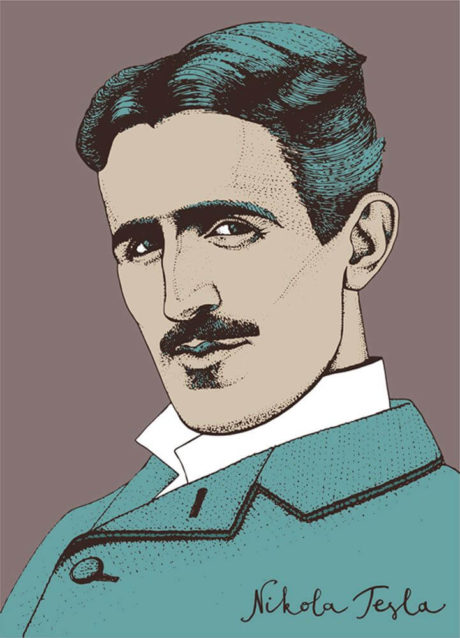 Westinghouse was correct to think AC is more efficient than DC for long-distance transmission. Then Nikola Tesla and AEG in Europe came up with Three-phase generation and distribution of alternating current. Though Tesla used to work for Edison for three years, they parted away on a disagreement on payment.
Westinghouse was correct to think AC is more efficient than DC for long-distance transmission. Then Nikola Tesla and AEG in Europe came up with Three-phase generation and distribution of alternating current. Though Tesla used to work for Edison for three years, they parted away on a disagreement on payment.
In 1886, Westinghouse established became successful in establishing a steam-powered AC power station. For the first time, generation, transmission, and distribution were happening at different voltages (500 V, 3000 V, and 100 V, respectively). Lastly, Westinghouse AC was prevailing over AC in the end because of the inherent advantages of AC.
Conclusion
There you go. You have your alternating current in the most basic form. As an electrician or someone who takes interest in everyday physics and electricity, the knowledge of alternating current and how it works is a must-have. Therefore, we hope you got your basic understanding of Alternating Current. And if you still have any confusion or question, you can easily sign up for our Online Electrician Course and know everything in depth.
Read More


How To Become A Paramedic In The UK? A Comprehensive Guide

Why Online Tutoring is the Future of Education for Young Children

Adapting to the Digital Era: How AI Can Support Online Education

How the DELE Exam Differs from Other Spanish Proficiency Tests (And Why It Matters)

